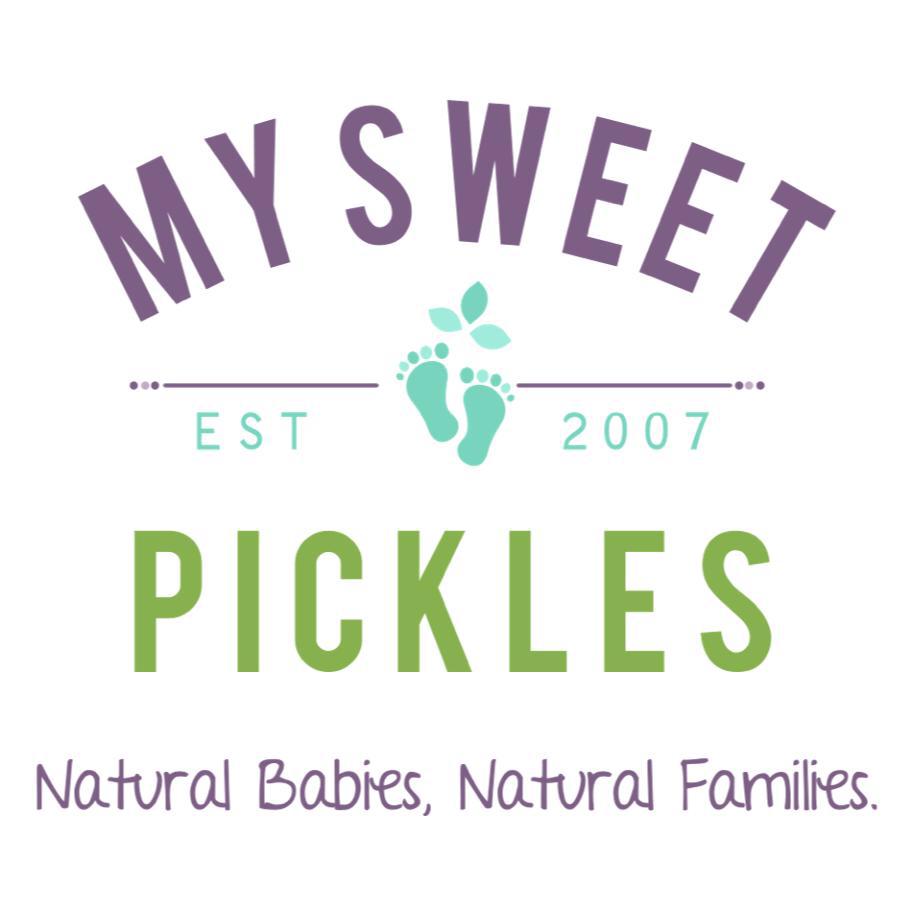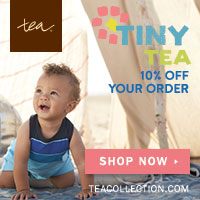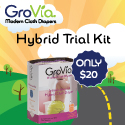
Whether you are switching from disposable to cloth diapers, or diapering a baby for the first time, finding information on cloth diapers can be overwhelming! I wrote a Cloth 101 guest post series on another blog over 3 years ago, but realized I’ve never done anything similar here. So…here it is!
There is some overlap with my disposables to cloth post, but do check that out as well.
Cloth 101
Cloth Diaper Types
These definitions aren’t set in stone. As new diaper types enter the market, the lines are blurred, and you may see the same diaper style called an AIO, AI2, Hybrid etc. depending on the manufacturer’s preference and opinion.
Pockets
Pocket diapers have an outer waterproof layer, an inner layer (usually made of a synthetic, stay dry material, but not always) with a pocket in between to insert absorbent material. These diapers must be washed after each use. A well known brand of pocket diapers is Bumgenius.
AIO
An all-in-one diaper has waterproof outer and a built in absorbent layer. The absorbent layer can be sewn in entirely, at one end, or sometimes snaps in/out. This style is most similar to a disposable, needs to be washed after each use, and is typically the most expensive style.
AI2
An all-in-two consists of a waterproof outer with lay in or snap in inserts; these are sometimes called a hybrid system when specifically designed to re-use the outer layer. You can create your own AI2 system with covers & inserts or trifolded prefolds. (You may also see the term “all in three” used when the system consists of an outer layer and two inserts.)
Prefolds
Prefolds are a square of multiple layers of fabric that can be folded around baby or trifolded. Your mother may have used these diapers on you. You can use pins, or other closure options like a Boingo or Snappi, or just cover them. Popular folding styles are the jelly roll, angel wing, bikini twist and trifold.
Flats
Flat cloth diapers are a large, single layer of fabric like a blanket. In fact, you can use receiving blankets and flour sack towels as diapers. They are easy to handwash and not as daunting as they seem. There are many folds you can use including origami, kite and pad folding (fold in quarters, then trifold.) Many of our grandmothers used this type of diaper.
Fitteds
Diaper terminology is confusing; a fitted diaper looks very similar to other styles however, the term refers to a diaper that is wholly absorbent and does not have a waterproof layer. Since they are not waterproof, they need a cover. The entire diaper is absorbent and diapers are generally made of cute fabrics. You can use them without a cover, but they often soak through wet zone.
Prefitteds
A prefitted is a diaper that has the material of a prefold, but has had elastic and/or snaps added.
Hybrid fitteds
This new iteration of fitted diaper, the hybrid fitted, has a hidden layer of fleece inside. Though not completely waterproof, the layer of fleece allows you to use the diapers without a cover around the house, as it helps the rest of diaper absorb before soaking through wet zone.
Contours
Similar to a prefold, but has been contoured to fit better around baby.
Covers
Diaper covers can be PUL, TPU, nylon, fleece or wool. Covers go over diapers without a waterproof layer, or can be used with inserts as an all-in-two system.
Hybrid systems
There is a difference of opinion on the term hybrid diaper in the cloth diaper world. Some say a hybrid is any system where the cover can be re-used for multiple changes, others say it is only hybrid if there are disposable inserts available from the manufacturer. A good example is gDiapers or Flip.
Sizing
One Size
Depending on the brand, a one-size diaper is estimated to fit from 7 or 8 to 30-40 lbs. I’ve found that these ranges aren’t necessarily typical, but greatly depends on your baby’s size and shape. You can find one-size diapers with size adjustments via a snap down rise, fold down rise, or adjustable elastic via toggle or buttons (like adjustable waist bands in pants.)
Sized
Sized diapers get you trimmer fit, and are great if you’re getting started in cloth late & baby may outgrow one-size diapers. They are generally slightly less expensive per diaper than one-size and although you will need more diapers, you won’t necessarily need every size. One benefit of sized diapers is that since each diaper will be used less often than if you used the same diapers from birth to potty, they will be more likely to last long enough to be passed on.
Newborn
Newborn cloth diapers fit that time period before one-size diapers fit. Some people choose to use disposables until the one-size fit as they are not as cost effective as o/s (but they do have great resale value.) Even smaller diapers are available if you would like to cloth diaper a preemie or small newborn.
Dual Sized
Dual sized diapers like Thirsties Duo and Applecheeks fit babies from newborn to potty in two sizes. These were some of my favorites when my son was too tiny for one-size diapers, but too heavy a wetter for newborn diapers.
Closures
Snaps
Diapers can close with snaps on the front or side, and different brands have many different snap arrangements.
Hook & Loop
On diapers, you will hear the terms “hook and loop” or Aplix (a name brand.) This is what you may otherwise know as Velcro however, the products used on diapers are much softer. This is most similar to a disposable diaper, but they can form “diaper chains” (when diapers stick to each other in the wash) and snag other diapers even when you use the laundry tabs (squares of loop for you to fold the hook tabs onto when washing.) They tend to curl & lose their “stick” over time, though you can fix this if you’re handy with sewing. Due to the wear & tear, H&L diapers to not retain as much of their value as snap diapers. These are still my husband’s favorite diapers, though both of our boys went through a stage where they un-did every velcro diaper!
No Closure
Flats, prefolds and some fitteds do not have closures (sometimes called “snapless.”) Use diaper pins, a Snappi, Boingos, or simply wrap a cover around the diaper.
Hook closure
WAHMies brand made a diaper that used a hook closure, but they have been discontinued and are hard to find. They are one of the best closure options for “streaker” toddlers after side snapping diapers.
Read more about cloth diaper closure options in my post blog.
Materials
PUL/TPU
Polyurethane Laminate and Thermoplastic Polyurethane are two waterproof materials used in diapers & diaper covers. TPU is heat bonded and sometimes feels softer than PUL. Rumparooz is an example of a brand that uses TPU.
Wool
Wool can be daunting to a new cloth diaper user, due to the cost and what seems like difficult upkeep. In fact, wool is quite easy to use. Wash new wool in lukewarm water with wool wash, then lanolize with liquid lanolin. Gently squeeze, roll between two towels to get moisture out, then lay flat to dry. Use it over fitteds, and when it is damp, turn it inside out to dry. When it is dry, you will notice it smells fresh & clean. Generally, wool only needs to be washed every few weeks, and lanolized even less often. Wool cloth diaper covers also come in shorties/longies (short or long pants) and can be hand knitted or made from interlock fabric. Wool is very breathable and will keep baby cool in summer and warm in winter.
Fleece
Fleece is a less expensive alternative to wool, and thick options like Windpro brand fleece make great night time diapers. You can find covers and some pocket diapers made with fleece, which is quite breathable.
Microfiber
What we refer to as microfiber is typically polyester/polyamide, and looks & feels like “microfiber” cleaning cloths. Microfiber is inexpensive, absorbs quickly, but can get a bit stinky since it loves to hold on to dirt & oils. Do not use microfiber directly against baby’s skin.
Bamboo
Rayon from bamboo is often touted as environmentally friendly however, the process of producing it makes many doubt those claims. It is generally more absorbent than cotton and can make a trim diaper. It can be used directly against skin and comes in many forms such as velour, fleece and more. If you see abbreviations like OBF and OBV, they are referring to rayon from bamboo.
Zorb
This is a name brand fabric made of bamboo/cotton viscose and poly micro fiber.
Micromodal
Gro-Via’s Kiwi pie fitteds are made from this material, which is rayon from beech trees.
Hemp
Hemp is very trim and absorbent as well as naturally antimicrobial. It is a great choice for night time, particularly paired with microfiber in a pocket, since microfiber absorbs quickly. Hemp loves water, so be sure to use plenty when washing to avoid any stinkies. You can use hemp directly against skin and can find it as a fleece, jersey material and more.
Cotton
Cotton is used in soakers, fitteds and more. It’s a good choice for babies who are sensitive to synthetics. Fine to use directly against skin.
Microfleece
Microfleece is a soft, synthetic material often used as pocket diaper inners since it wicks moisture away. It tends to pill over time.
Microsuede
Like microfleece, microsuede is a synthetic material that wicks moisture away from baby. Microsuede isn’t quite as soft but tends to wear better. Rarely, a baby may be sensitive to microsuede.
Read more about absorbent materials used in cloth diapers, cloth diaper inners and waterproof layers in cloth diapers in my posts on cloth diaper anatomy.
Inserts/Doublers/Boosters/Soakers
When shopping for these items, pay close attention to dimensions, as terminology isn’t always consistent. In general, an insert or soaker can function as your primary absorbency. Something that is called a booster or doubler is designed to add absorbency when used with another insert.
Accessories
Diaper Pins are still around, but you don’t have to use them. Snappis and Boingos are much easier to use and can help you close your closureless diapers.
Some families feel a diaper sprayer is a must have. I’ve cloth diapered for about 4 years and have never used one. Once my babies were eating solid foods and I could no longer wash diapers without rinsing, I simply scraped what I could with a piece of toilet paper and washed, One the rare occasion that a diaper needed extra help, I would “dunk and swish” without getting my hands dirty. A sprayer hooks up to your toilet water line & allows you to spray off messy diapers. Other accessories like the Potty Pail, Cloth Diaper Butler and Spray Pal are there to help you get your diapers sprayed without making a mess! When people think “cloth diapers” they may think of prefolds, plastic pants, soaking diapers in the toilet and in wet pails with bleach, but that’s not the case!
Wet bags & pail liners allow you to store or tote around dirty and wet diapers. Wet bags come in many sizes, including large sizes that serve as a hanging diaper pail. A “wet bag” is a tote that is lined with waterproof material and usually zips closed. You can use pail liners in many diaper pails (Ubbi, Diaper Dekor) or trash cans.
Diaper Liners can be fleece, which protects diapers from diaper cream, makes natural fiber diapers stay dry, and helps solids roll off more easily. Disposable liners are designed to allow you to flush solids away (use caution with septics or older plumbing systems) and some are durable enough to survive a wash in the machine if they are just wet (I definitely wouldn’t flush those!)
Wipes Cloth wipes go hand in hand with cloth diapers, and come in various sizes and price points, from economical to luxurious. Just toss them in with your diaper laundry.
Wipes Solutions You can moisten your wipes with water, or use any number of wipe sprays or dissolvable “bits” to make your own. Spray the wipe or spray baby’s bottom.
Diaper creams Petroleum based diaper creams shouldn’t be used with cloth diapers (use a liner if you must use them.) Instead, look for “cloth diaper safe” creams that are typically made with natural oils. Use sparingly and use a liner for good measure. (More info in this post)
Detergents There are many “cloth diaper safe” detergents on the market designed free of all the “no-nos” like enzymes, brighteners etc. Finding the right detergent can be trial & error, and what works for your neighbor may not work for you. (More info on detergents in my cloth/disposable post.) Typically any detergent that works well on your laundry will be fine on diapers. Avoid detergents with fabric softeners.
Deodorizers An open pail is generally not stinky, but if yours is getting a little ripe, there are many pail fresheners on the market.
Washing
Washing cloth diapers is not as hard as you may think.
When baby is breastfed, diapers can go right in the pail, without rinsing. When baby is older, scrape or spray what you can and put the rest in the wash. You can of course use disposable liners if you wish.
Recently I have heard of people being told to wash diapers with vinegar only. You wouldn’t wash your undies without detergent and your diapers need detergent too! Don’t be shy with detergent. Though it may take you trial & error to find the right detergent, amount & wash routine, use the recommended amount of detergent for a heavily soiled load and choose any detergent that works for your family. Warm pre-rinse, hot wash with recommended amount of detergent & rinse, followed by an additional warm rinse (if necessary) seems to be the most commonly successful wash routine.
Stripping Diapers
Stripping diapers refers to the process of soaking & washing diapers in additives like Dawn dish soap, RLR laundry treatment, bleach and other additives. Some people recommend boiling or washing diapers in a dishwasher (Please don’t!! Fire hazard!) In my opinion and experience, with a proper wash routine and detergent, regular stripping is not necessary. If you are switching to a new detergent, or have purchased used diapers, you may want to add additional detergent and rinses. If you feel that your diapers aren’t getting clean and you find your self “stripping” a lot, increase your detergent, switch detergents, or tweak your wash routine.
FAQs
How Many Do I Need
I felt most comfortable when I had more than 20 diapers. Determine how many diapers you change per day, how often you want to wash, and give yourself a cushion to get them ready for use again. I don’t recommend waiting more than 3 days to wash, no matter how many diapers you have, or they start to get a bit…pee-yew!
How Do I Know When to Change Them
Aim for every two hours. If you are diapering for nap time or a car ride, consider adding some absorbency. There are many diapers that will last an incredibly long time, but really, every diaper (cloth or disposable) should be changed as soon as it is wet. Since it costs you very little to change a cloth diaper, there’s really no need to try to “stretch” it.
Aren’t They Expensive?
At first glance, sure they seem expensive. Keep in mind that the cost of disposables will exceed that amount many times over. Consider using frugal cloth diapering methods (prefolds, flats, blankets, flour sack towels) to eliminate the cost of disposables while you’re switching to cloth. Baby not here yet? Set aside the cost of disposables each week to save for your stash. Look into layaway as well.
Will my house stink?
I have less smell than with a disposable diaper pail (no poop sitting in mine!) If you wash every 2-3 days and keep your pail open, you shouldn’t have much smell. When you enter the toxic toddler pee stage, a little pail deodorizer goes a long way, or try pre-rinsing the diapers while you wait for wash day.
Which is the Best Diaper?
Ah, the million dollar question. The answer is different for each baby & family and what works now might change when baby’s shape changes. What works for one child may not work for your next. For this reason, I always recommend trying several brands before committing, and keep your stash varied.
How Do I “Prep” Diapers?
If your diaper is PUL/microfiber, wash once and use. For “natural fibers” such as hemp, cotton and bamboo, wash 2-3 times before using, and allow 8-10 washes for the full absorbency to be reached. You need to remove natural oils and in the case of cotton, allow the fibers to fluff up. I cheat and usually just wash a new diaper alone once, then throw it in with other diapers or even like color laundry.
What is Wing Droop?
Wing droop happens often when a smaller baby is in a larger diaper. You have the diaper snapped in front and the “wings” droop down, often leading to leaks. Some diapers have an added “hip snap” securing the diaper, but diapers that fit my son well don’t have droop even with no hip snap.
Where Do I Store Them?
Families have all sorts of methods for storing diapers, both clean & dirty. I have some in drawers and some in baskets…other families have their stashes organized perfectly in totes and on shelves. You’ll find what works for you. For dirty diaper storage, use wet bags or a pail liner in a trash can or diaper pail.
Going Out/Diaper Bag
Cloth diapers are bulkier than disposables, of course. I do not carry a diaper bag, but carry a wet/dry bag (a “wet bag” that also has a storage area for dry items) when I go somewhere that I may need to change diapers. (I keep one in the car just in case!) You can also consider using covers & inserts when you go out, as they are very trim and can fit in any diaper bag or even a purse. I also carry a wipes pouch with single layer wipes and a travel size bottle of wipes spray.
Night Time Diapering
Night time diapering can be another hurdle for new cloth diaper users, and just when you have it figured out, baby’s wetting habits can change! Popular methods are hemp prefolds and/or inserts, or fitteds & wool covers.
Will My Baby Need Bigger Clothes?
Onesie extenders are great for using with cloth diapers however, be sure the onesie isn’t tucked into the diaper anywhere, or you can experience leaks. Consider using shirts and no pants when it is warm. Some moms use Babylegs (affiliate link) to cover baby’s legs when wearing cloth & a shirt. My babies were slim, so cloth actually helped their pants fit better! Project Pomona Pants makes pants specifically for cloth diapers. Some diapers are extremely trim, especially if you use covers with hemp inserts.
How long will they last?
With proper care, a one-size diaper will diaper your baby from birth to potty training. With a bit of maintenance & upkeep (new soakers, replaced elastic etc.) you can diaper multiple children with the same diaper. (I have diapers that have been in constant use for 4 years.) As far as resale value, cloth diapers are like driving a used car off the lot, once a diaper is pre-owned it loses value regardless of condition, but even well loved diapers have resale value. (Exception: very inexpensive imported diapers generally do not hold much value.) Hard to find diapers/prints often sell for far more than original retail even when used (example, Sustainablebabyish and Applecheeks.)
Additional Terminology & Abbreviations
If you’re looking at used cloth diapers, you’ll encounter a whole host of abbreviations such as: NIP (new in package), NWT (new with tags), EUC, VGUC, GUC, UC (descriptions of the diaper’s condition), BST (buy/sell trade), ISO (in search of), IDSO (in dire search of, sometimes accompanied by a photo of a sad, sad baby that desperately needs said diaper, hee hee), FSOT (for sale or trade), FTO (for trade only), FSO (for sale only), PPD (postage paid domestic-price includes U.S. shipping.)
WAHM-Work at Home Mom made diapers
Stocking-many WAHM brands stock their stores on regular dates
Stalk-Waiting & trying to snag the item you want to buy!
Brand abbreviations-Sloomb/Sbish (Sustainablebabyish), Rag (Ragababe), AC (Applecheeks) and other brands have their own lingo & abbreviations.
Unicorn-A hard to find and much desired diaper
HTF-Hard to find
Aplix/Hook & Loop-“Velcro” like closure diapers
FOE Fold over elastic, a form of elastic often used on WAHM made diapers. Read more about elastic types in my post on cloth diaper anatomy.
Where to Buy
I recommend shopping local, or from a reputable online cloth diaper retailer, so your purchase is backed with knowledge and support.
Stick Around
Subscribe
to Change-Diapers emails and/or RSS Feed. “Like” Change-Diapers on Facebook, @chgdiapers on Twitter, on Google+ and ChgDiapers on Pinterest.
View my review archive
to see hundreds of diapers up close and personal.
Read Mailbox Mondays
posts to see other reader’s questions.
Check out the Weekly Giveaway Roundup
to enter to win free cloth diapers.
Switching from disposables?
find tips, hints and everything you need to know about switching from disposables to cloth diapers.
Have a question?
Contact me anytime, I’d love to hear from you.
Are you a blogger?
See where I list my giveaways, and sign up for some of my favorite affiliate programs.









 Maria wants to live in a world where cloth diapers are the norm and moms can make parenting choices without judgement. When she’s not chasing her 18, 14 and 11-year old kids around, you might find her checking out the latest gadgets, organizing something (again) or exercising in the fresh air.
Maria wants to live in a world where cloth diapers are the norm and moms can make parenting choices without judgement. When she’s not chasing her 18, 14 and 11-year old kids around, you might find her checking out the latest gadgets, organizing something (again) or exercising in the fresh air. 







[…] Intro to Cloth Diapers […]
[…] Intro to Cloth Diapers […]
[…] Intro to Cloth Diapers […]
[…] Intro to Cloth Diapers […]
[…] Intro to Cloth Diapers […]
[…] Intro to Cloth Diapers […]
My sisters both cloth diapered their kids. I made most of the diapers. It was so fun picking out cute fabrics for them. We even had a diaper sewing party at one point, with a bunch of cutting and sewing going on! They lasted through 4 kids and I think got handed around the neighborhood after that.
Thanks for the post
[…] Repost of Maria’s Article https://change-diapers.com/2013/08/introduction-to-cloth-diapers/ […]
[…] can really get a feel for what a good quality cloth diaper is like. You might be turned off if your introduction to cloth diapers is via a used diaper with relaxed elastic, worn inserts or some other […]
[…] 2. Research the various types of cloth diapers and choose one(s) that fit your baby and lifestyle. All in Ones, All in Twos (Hybrid), Pockets, Prefolds, Flats, Fitteds… Wowza! Each type of cloth diaper has its pros and cons. For example, using prefolds and covers is very affordable and effective for even the heaviest of wetters; however, it may be difficult for other care-takers to use. Change-Diapers has an excellent overview of different cloth diaper types here. […]
[…] cloth diapering […]
[…] Intro to Cloth Diapers […]
Great information.
Great thing to share with my non cloth friends!
Wow, this is an incredibly rich source of information! Thank you for breaking in down simply, yet thoroughly!
[…] Intro to Cloth Diapers […]
[…] Intro to Cloth Diapers […]
this is an awesome guide! thank you so much for all the info!
Wow, this is an incredibly rich source of information! Thank you for breaking in down simply, yet thoroughly!
Thanks for this information! When we first bought cloth we bought a variety, I’m glad we did. We did a wonderful rent to own program through Kebbie’s Diaper Bag, kebbiesdiaperbag.com
I highly recommend her site, especially for those just starting out. She was so helpful to us. And she also does a newborn rent to own package!
[…] 2. Research the various types of cloth diapers and choose one(s) that fit your baby and lifestyle. All in Ones, All in Twos (Hybrid), Pockets, Prefolds, Flats, Fitteds… Wowza! Each type of cloth diaper has its pros and cons. For example, using prefolds and covers is very affordable and effective for even the heaviest of wetters; however, it may be difficult for other care-takers to use. Change-Diapers has an excellent overview of different cloth diaper types here. […]
I learned a lot lot thanks
Thanks I really needed this~
Great info. Thanks
[…] in the water or jump in the deep end, you owe it to yourself to at least try cloth diapers. Get an introduction to cloth diapers, maybe some tips for switching from disposables to cloth (if that applies to you) and then just do […]
[…] Change-Diapers.com – There are basic resources, reviews and advice on this site. Every Monday a new reader question is answered, usually related to cloth diapering. Also, Maria is such a nice person who answers every question people ask her! […]
I keep thinking I should write something like this for my blog…. and frankly, having read this, I don’t need to reinvent the wheel! Thanks, Mama!
[…] Intro to Cloth Diapers […]
What a great resource! I loved your explanation of hybrid fitteds, because I’d asked before and nobody ever gave me a very good response 😉